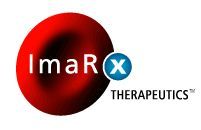TUCSON, Ariz., Sept. 24, 2008 (GLOBE NEWSWIRE) -- ImaRx Therapeutics, Inc. (NasdaqCM:IMRX - News) today announced that it has divested its urokinase business to Microbix Biosystems, Inc. (Toronto:MBX.TO - News). Through this transaction, Microbix has acquired the remaining urokinase inventory and related assets and has assumed full responsibility for ongoing commercial and regulatory activities associated with the product. Urokinase is an FDA-approved thrombolytic, or clot-dissolving agent, indicated for the treatment of acute massive pulmonary embolism. ImaRx acquired an approximate four year inventory of the product from Abbott Laboratories and has been selling the product since 2006.
Under terms of the agreement, Microbix acquired the urokinase inventory, regulatory filings and related assets for an upfront payment of $2 million and the assumption of $500,000 in chargeback liabilities for commercial product currently in the distribution channel. An additional $2.5 million payment will be made to ImaRx upon release by the FDA of the three lots of urokinase that are currently subject to a May 2008 Approvable Letter.
Bradford A. Zakes, President and CEO of ImaRx, stated, ``We are pleased to have completed this transaction with Microbix. Their in-depth knowledge of this product and biologics manufacturing expertise uniquely positions them to provide long-term support for this medically important product in the marketplace.''
ImaRx intends to utilize the proceeds from this transaction to fund operations as it continues to evaluate strategic alternatives pertaining to its SonoLysis program and other corporate assets.
About ImaRx Therapeutics
ImaRx Therapeutics is a biopharmaceutical company that has been focused on the research, development and commercialization of therapies for vascular disorders. The Company's research and development efforts have been primarily focused on therapies for stroke and other vascular disorders using its proprietary microbubble technology. The Company's commercialization efforts were focused on its product, urokinase, for the treatment of acute massive pulmonary embolism.
The ImaRx Therapeutics, Inc. logo is available at
About SonoLysis
ImaRx's SonoLysis program involves the administration of its proprietary MRX-801 microbubbles and ultrasound to break up blood clots and restore blood flow to oxygen deprived tissues. The sub-micron size of MRX-801 microbubbles enables them to penetrate a blood clot, so that when ultrasound is applied their expansion and contraction, or cavitation, results in a disruption of the clot into very small particles. This technology was most recently evaluated in a Phase I/II clinical trial in combination with tPA in patients suffering from acute ischemic stroke.
About Urokinase
Urokinase is a thrombolytic or clot-dissolving agent indicated for the treatment of acute massive pulmonary embolism, or blood clots in the lungs. The product has been commercialized for more than 20 years and has been administered to greater than four million patients. In 2006, ImaRx acquired urokinase and all related assets, including an approximate four-year supply of inventory, cell lines and manufacturing rights to the drug. Since October 2006, ImaRx has been selling its urokinase inventory in the U.S. market where it is estimated to be listed on pharmacy formularies at approximately 700 acute care hospitals.
Cautionary Statement For The Purpose Of The ``Safe Harbor'' Provisions Of The Private Securities Litigation Reform Act of 1995
This press release contains forward-looking statements, which are subject to risks and uncertainties that could cause actual results to differ materially from those set forth in the forward-looking statements including: the FDA may not approve the release of the 3 lots of urokinase and as a result ImaRx will not receive the additional $2.5 million payment; ImaRx may not timely or successfully develop SonoLysis; the Company may not have sufficient resources to complete the development of SonoLysis for any indication; and other risks associated with the approval and commercialization of the technologies. These forward-looking statements represent ImaRx's judgment as of the date of this press release. Additional risks and uncertainties related to ImaRx can be found in its filings with the U.S. Securities and Exchange Commission. This press release is as of September 24, 2008 and the Company disclaims any intent or obligation to update these forward-looking statements.
Contact:
ImaRx Therapeutics, Inc.
Bradford A. Zakes, President & CEO
(520) 770-1259
bzakes@imarx.com
Source: ImaRx Therapeutics, Inc.







